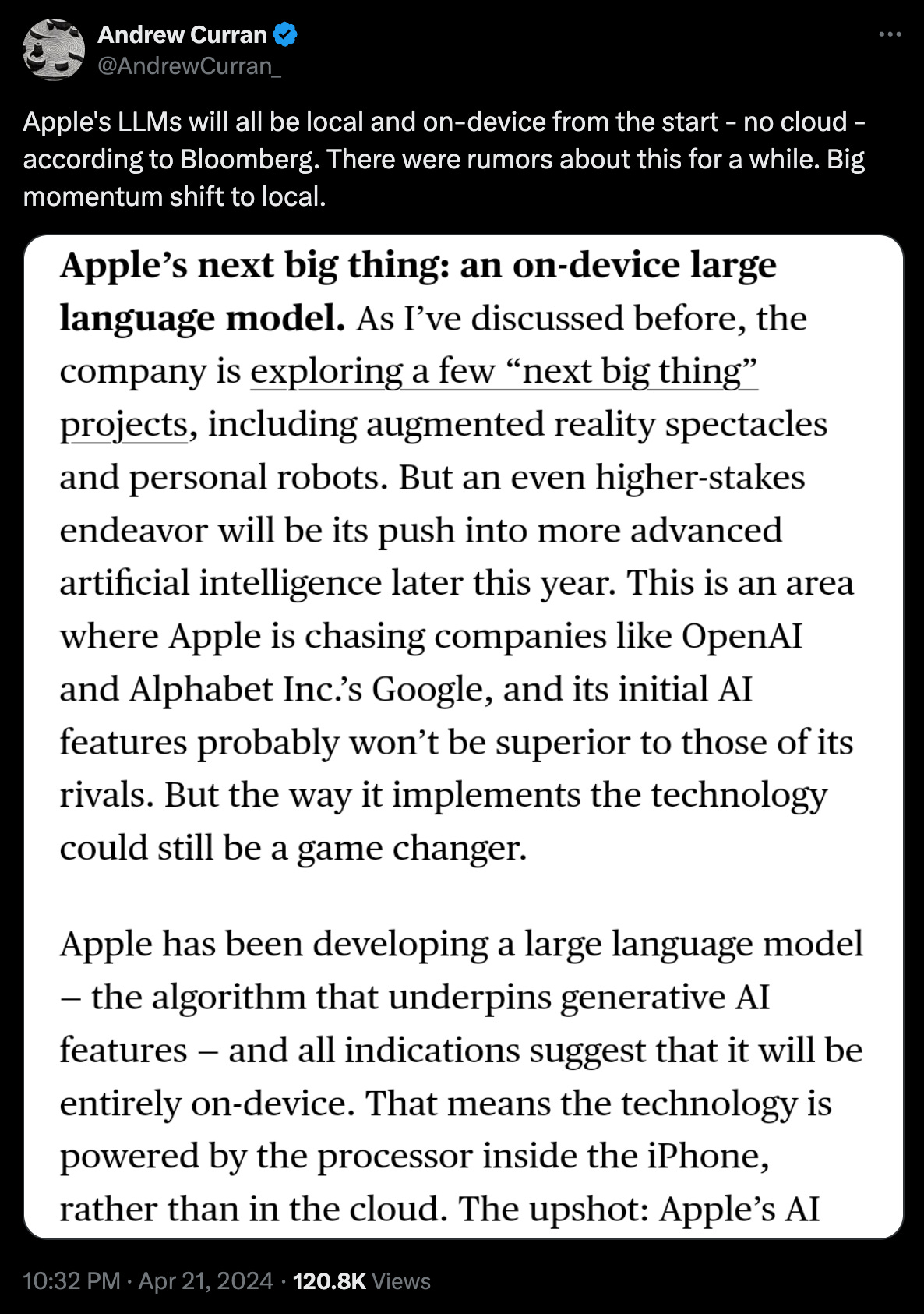We’re in the busy season on the home front, and I’ve needed to relegate some things into the “almost ran” section of my to do list. This has included public writing, which took a back seat to soccer games, orthodontist appointments, planning birthday parties, hosting said birthday parties, gardening, and of course, all of the silly wonderful spontaneous stuff that should always be prioritized.
One useful byproduct is that I find myself much more aware of where technology is helping, and where it is hindering my ability to get everything done.
This has led me to wonder about which use cases for GenAI are starting to solidify, and which are looking more like effects of the hype cycle. Based on the entirely unscientific poll of talking to my friends and asking for inputs on social media, I’m picking up on some pretty loud trends:
- People who are introduced to AI at work are more likely to find use cases for it than people who dabble with AI at home.
- Younger people are leaning into AI, particularly at school (screams in “parent”).
- For anyone who has tried AI, there is a big cliff between those who use it, and those who feel like they would use it if they just “got it” better.
Pew Research released their latest survey last month on adoption rates of ChatGPT, and I wasn’t surprised to see similar trends in their data.
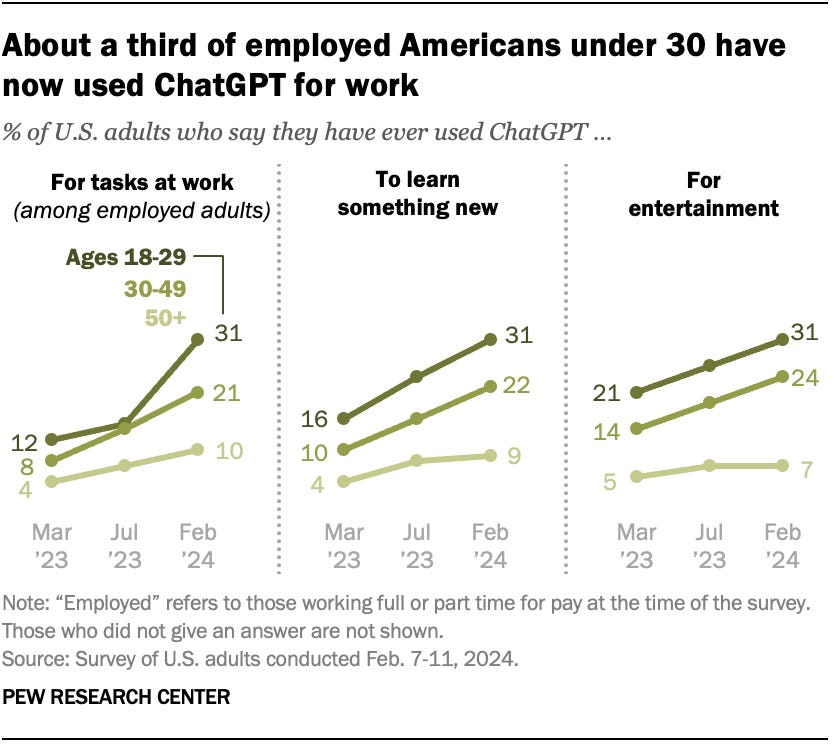
As a “geriatric Millennial,” it’s reassuring to see people in my age cohort keep pace with the younger group. Specific to the data, I have a working theory that most people will be introduced to GenAI through work–and only a very small percentage of people will find usefulness in AI if they come to it as a consumer first and foremost.
The emerging benefits of AI at work appear to be real. Ethan Mollick recently shared two papers that demonstrated both the efficiency gains and the enjoyability gains of working with AI.
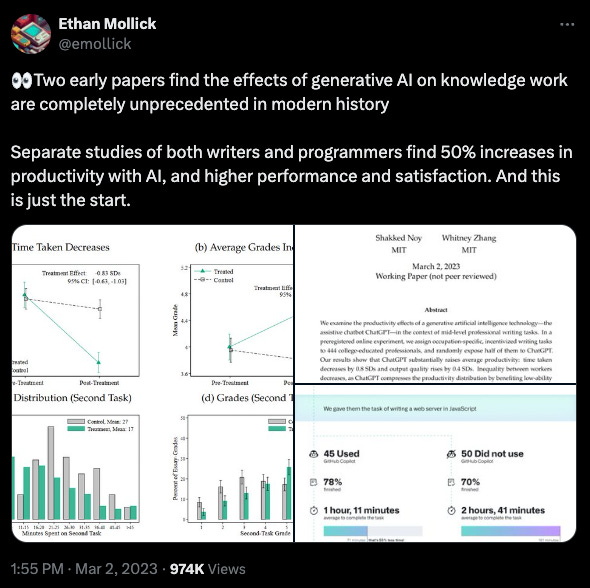
Logically, this holds. Work is where you are likely to have a pile of mundane, repetitive tasks you have to perform. You have a fixed set of hours dedicated to work, and there are opportunity costs for each activity you participate in. An hour saved managing your task list is time you can work on a critical project and still get out the door at a reasonable time.
But what about at home?
For a technology to truly revolutionize how we live, when does it need to start generating value in our day-to-day lives as well?
I’ve started to make a list of AI use cases. Every time I use AI for something that I would normally do myself–or find myself wishing in the moment that it would perform that task–I write it down. Here are a few I’ve noted:
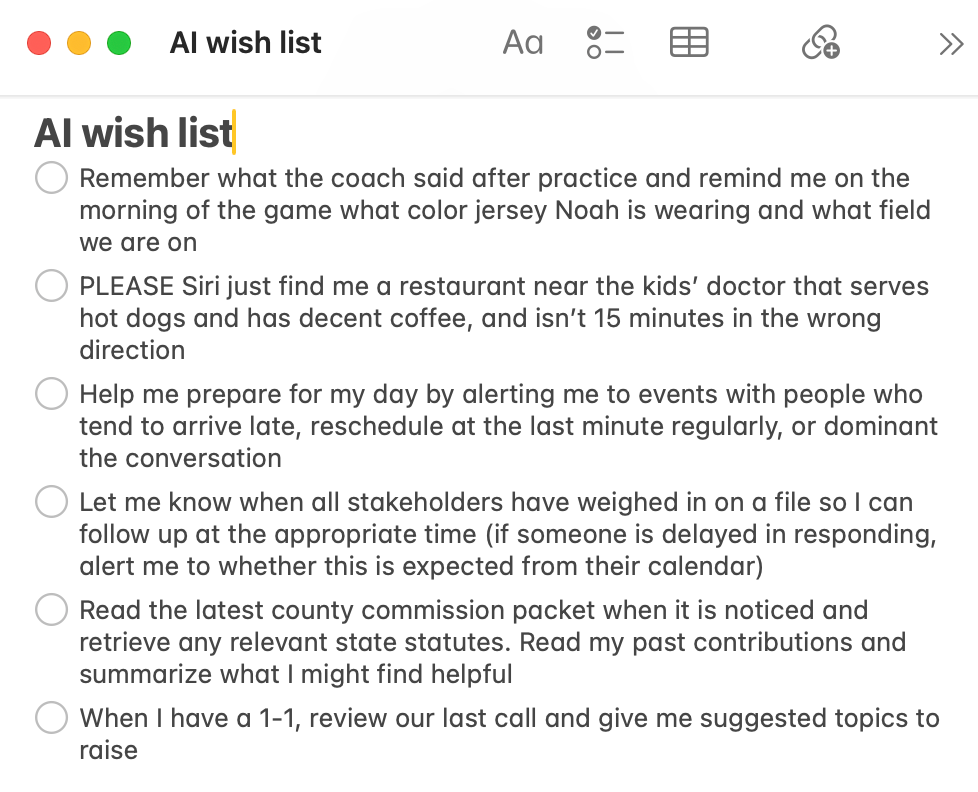
At home, I want AI to be the housekeeper I can’t afford. Organize my schedule, manage and delegate tasks, see the patterns of information I cannot, alert me to them, and then get out of the way until I tell it what to do next.
A laundry list of mundane tasks I pay AI to complete
Search for the stuff I don’t want to look for
Google is so stuffed with crap these days, and when you do find a good result you have to wade through mounds of cookie consents, ads, and newsletter popups. Sometimes you just want the answer, and this might be the single most useful use case that I now turn to AI for.
- I don’t have buttermilk. What can I substitute in my pancakes?
- Are there generic vacuum bags for the R25 model for less than a $3.50 unit price?
- What can I plant near viburnum if I wanted to keep them on a similar watering schedule in an outdoor bed?
- What are some basic steps I can follow to train my new puppy?
Structured trips to the grocery store
My husband and I share an Apple Reminders list where we stash things throughout the week that we need from the grocery store. There is no organization to it, and we’ll have AAA batteries next to bananas next to face wash and kale. Because of this I either find my trips to the store last twice as long. I dash around the store with no plan of attack, or I mentally try and group things within the list based on which aisle I am on, almost always resulting in me forgetting something or resorting to tactic #1.
Now I have a new approach.
In a saved conversation with ChatGPT, I have shared a picture of my grocery store’s map (you know, the placard that says bandaids are in aisle 11 and milk is in aisle 4). When I am ready to hit the store, I take a photo of the reminders list and upload it, and it returns a structured grouping of which items to look for together, and in which order. I can even let it know when something isn’t where I expected, for future reference.
This saves me time and lets me quickly rip through the store–a special gift during tourist season here in Moab. I’m waiting for the app version of this.
Checking my text for grammatical errors
I generally consider myself to be a strong writer. That said, I have a tendency to write from a stream of consciousness perspective, which doesn’t always result in the strongest grammar. Tools like Grammarly help me avoid stupid mistakes, but I rely on AI to cut deeper into the structure of my writing and provide suggestions.
I have some friends and family who don’t speak English as a first language, and I know a few of them use these tools regularly to ensure their written words come across as native English.
I don’t know what a productized version of this looks like, or if it needs to exist. I’ve yet to find a use case for GenAI producing content for me from scratch–it really can’t fully grasp my voice, and I prefer to write myself as a practice of thinking.
That said, the benefit of having a personal editor is priceless.
There’s a common thread to all of these. We are bombarded by information all the time: content, ads, popups, videos, distractions, etc. This is what I want GenAI to cure. Get me what I need, when I need it, even if I can’t see it myself, and then bail.
Bullish on Limitless
I am a slow adopter of AI-driven hardware, but the Limitless pendent is the first product example I have seen that I am genuinely excited about. For me, it’s use case is clear: digest information and make sense of it.
These devices aren’t shipping until late 2024, so we’ll see if the hype meets reality. There’s one thing they did differently than any other similar tool, and this is what seems to set them apart.
They nailed the privacy.
The Limitless website makes explicit guarantees of information safety. If that pans out, it means I will be far more likely to use it in my day-to-day life, and likely get more value and use out of it.
Privacy isn’t just a policy, it’s a feature.
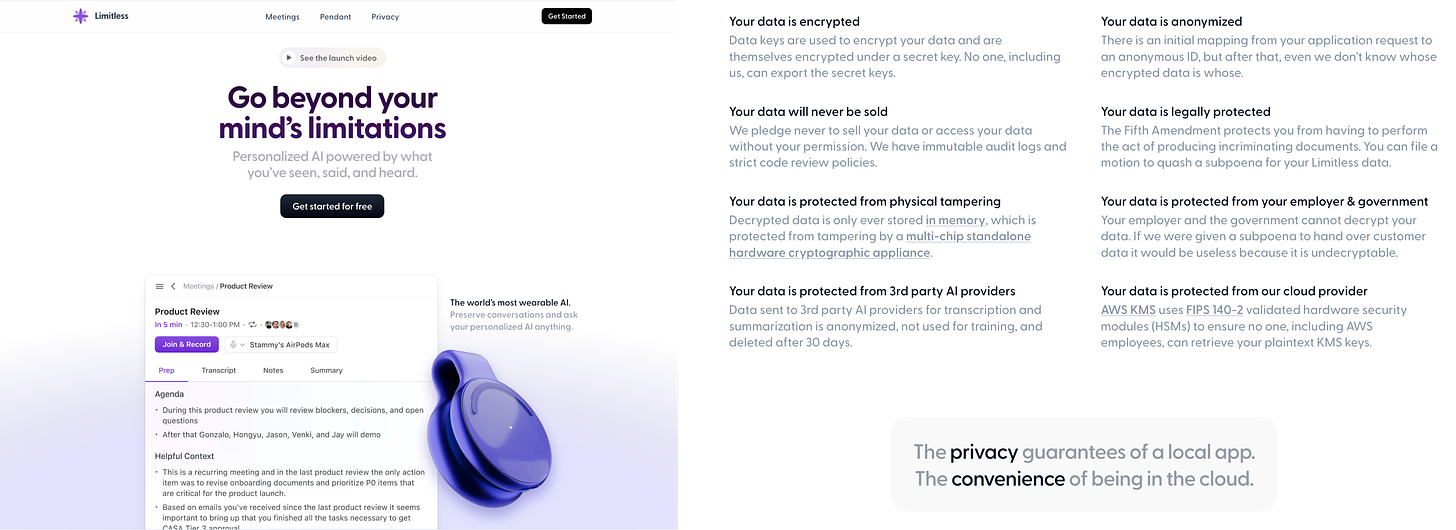
Apple’s shift to local
Andrew Curran pointed out this week that Apple’s recent AI announcement shows a sizable shift away from cloud-based UX. Just as the Limitless’s privacy setting helps it stand out, I wonder how Apple’s choice will give them a leg up in the ultra-competitive mobile market.
These days, I just assume that my phone is listening. I find myself being hyper cautious about what I say near smart devices, and what I store on iCloud. Isn’t that the opposite of what they companies want?
If Apple continues to make a play towards privacy, it may prove to be one of their smartest strategic decisions. Public trust in AI is sinking. If you take that fact as a creative constraint, it’s fertile ground for innovation.
Additional reading
- CES Paper “AI adoption in America: Who, What, and Where” (Summarized by MIT)
- The Verge on Meta’s quest to top ChatGPT. I am totally uninspired to pick any of these teams to root for tbh, but the Llama open source model seems super promising
- AI has a measurement problem, an insightful piece by the New York Times.“Artificial intelligence is too important a technology to be evaluated on the basis of vibes.”
- AI isn’t useless, but is it worth it? Molly White on AI use cases and needfulness
- Ben Evans had a deep dive on AI use cases on his blog this week as well
- Everypixel on Travel as an AI use case
- Finally, the AI layoffs are starting. Tome recently announced a downsizing, as did Stability AI. We’re starting to slide down the backside of the hype crest. Strong, verified use cases will be critical as the wave subsides.
What other use cases are you seeing?
